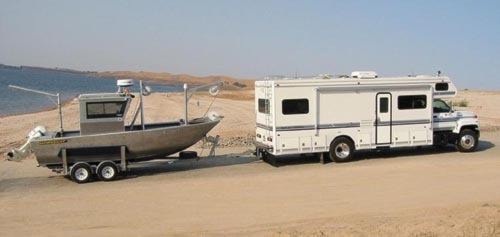A specialist has been called in to help locate the body of Raymond Salmen in Harrison Lake.
Salmen, from Vancouver, is presumed drowned in the northern end of the lake, following a mysterious disappearance in early June. Salmen's campsite was found abandoned, along with his two dogs, following complaints of shots being fired in the remote area. RCMP found a rifle, shell casings and men's clothing near the area, and have concluded he must have been in distress and attempted to swim back to his campsite.
An intense search of the area has not located Salmen's body, and now Gene Ralston is coming in from Idaho with special equipment to assist with the search.
Ralston and his wife Sandy spend a lot of their time traveling around North America, and have helped locate more than 80 bodies in last 10 years. Their boat is equipped with a side-scan sonar and remote-operated vehicle, and was used recently in Merritt to help find the bodies of two teenagers who drowned in Nicola Lake. The boys bodies were found within a few hours of searching.
The Kent-Harrison Search and Rescue team have a similar side-scan sonar unit, and the crew will be assisting the Ralstons in their efforts. The search starts on Saturday morning.
KHSAR's Neil Brewer said his team is looking forward to learning from the Ralstons, who, in helping find the bodies of drowning victims, have been able to give many families closure.
What they learn from the Ralstons, they can "apply that technology to assist the RCMP dive team in the lower mainland," Brewer said.
Ralston is a retired marine biologist. On his website, he describes how side sonar works.
"The side scan sonar system's transducer is housed in a towfish, which is towed through the water a few feet above the bottom. The reflected acoustic returns are processed into an image similar to an aerial photograph, which is viewed real-time on a computer monitor in the towing vessel. Typically, the side scan sonar searches a swath 60 to 160 feet wide at about 2 miles per hour, although other ranges can be used depending upon the size of the object being sought."
His boat is equipped with more than 900 feet of electro-mechanical cable for use in deep water.
While they assist with body recovery, the Ralstons have also worked with NASA, helping to locate space shuttle debris.
There was a full search of the area, using search and rescue teams, the RCMP special units and more.
“This section of Harrison Lake is very deep, and the water rapidly plunges to a depth of 160 metres,” RCMP Cpl. Len vanNieuwenhuizen said at the time. “The depth of the lake and the sunken physical features of logs and boulders present challenges in locating Mr. Salmen.”
news@ahobserver.com
